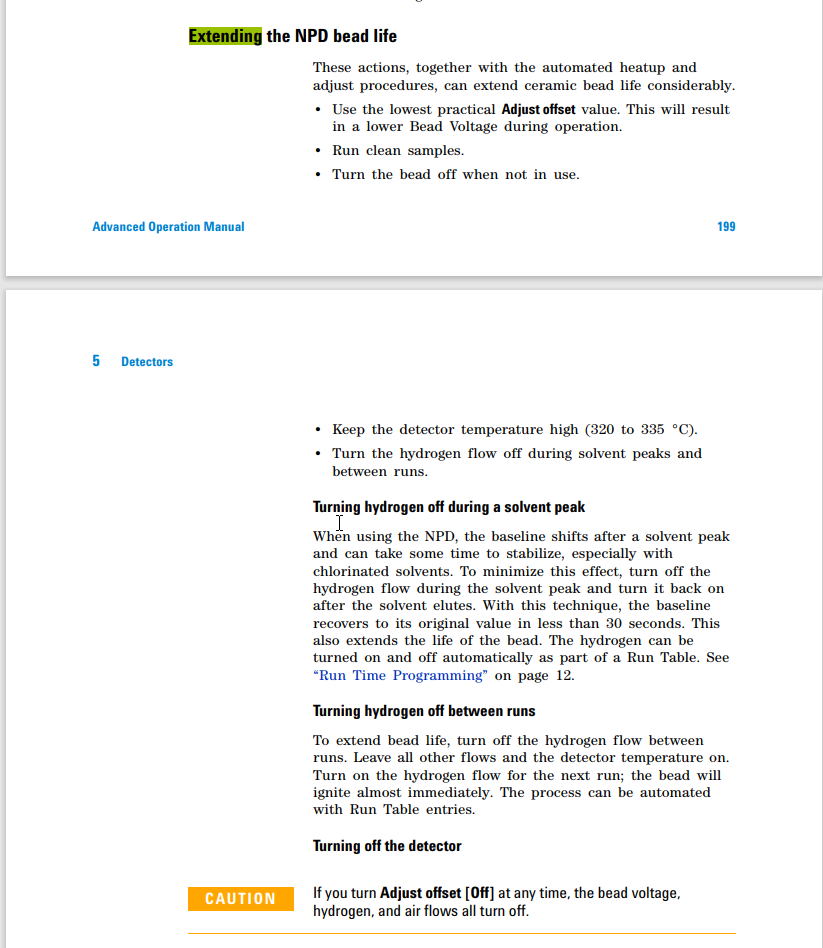Hi all,
After recently changing to a split/splitless inlet and capillary column on our 7890B GC we've found ourselves changing out the bead more than usual. When starting up our machine we recently got a noisy flat line, as pictured. I know that this can happen if the there is not enough sample drawn into the system, but the syringe in this scenario was freshly changed. We ended up changing out the bead to resolve the issue, but still aren't certain as to root cause. Has anyone experienced this issue and is familiar with what may cause it?
Additionally, any experiences with why changing to a capillary column from a purged packed inlet/glass column that might put more strain on the bead?

Thanks!

